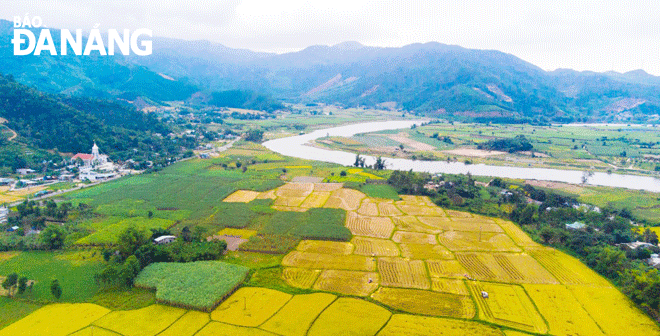Attempt to fully tap potential and advantages of tourism in rural areas
Aside from beach tourism, Da Nang has great potential for the development of eco-tourism, community-based tourism and agricultural tourism. Such types of tourism in rural areas are attracting much attention from locals and travellers.
 |
| Hoa Bac Commune, Hoa Vang District, has great potential for the development of eco-tourism, community-based tourism and agricultural tourism. Photo: XUAN SON |
From more than two decades ago
More than 20 years ago, in 1999, a road leading to the Ba Na Hills peak in Hoa Ninh Commune, Hoa Vang District, was restored, boosting the tourism development on the western side of the district.
Specially, since its official operation in 2009, the Ba Na - Suoi Mo eco-tourism area (Sun World Ba Na Hills Tourist Area) has been very attractive to visitors from both home and abroad thanks to its unique tourism products and high-quality services, thereby making an important contribution to the development of Da Nang's tourism industry.
For a long time, the Suoi Doi and Ngam Doi eco-tourism sites in Hoa Phu Commune have become quite popular with local residents.
On March 29, 1997, the Suoi Hoa eco-tourism site was put into operation and attracted a large number of domestic and foreign tourists.
However, it was not until there was a large-scale investment from private businesses that the suburban district began to develop specialized and methodical resort and experience tourism products such as the Hoa Phu Thanh tourist site (2013), the Nui Than Tai Hot Spring Park (2016), and the Lai Thieu Eco-tourism Area (2017).
Currently, it is easy to see the positive change of the countryside with many 2-3 storey houses sprouting up with many restaurants, refreshments, souvenir shops and even small tables selling local products.
The development of tourism in the district contributes significantly to the socio-economic development of the district, and the city as a whole.
Along with Hoa Ninh and Hoa Phu communes, Hoa Bac Commune also has great potential and advantages in terms of eco-tourism and community-based tourism.
Future trends in ecotourism and community-based tourism
The implementation of the over VND 2 billion project for building a community-based tourism model associated with the preservation of the Co Tu culture in the Ta Lang and Gian Bi villages in 2017 and 2018 significantly contributed to promoting the tourism development of ecotourism in the locality.
The project was funded by the Global Environment Facility’s Small Grants Programme (GEF SGP) and the United Nations Development Program (UNDP).
Under the project, 8 tourism service groups were established to serve tourists, namely gongs, arts, food, stream trekking, knitting, singing, brocade weaving, and introductory commentaries, with the participation is 62 Co Tu families.
Visitors to the 2 villages have the opportunity to learn more about the cultural life, customs and habits, and production practices of the Co Tu inhabitants, enjoy traditional cuisine and gong arts, go stream trekking, shoot crossbows, make traditional handicrafts and make ‘ruou can’ (rice wine drunk out of a jar through pipes).
The Hoa Bac Commune authorities have cooperated with such local tourism enterprises as Vitours, the V.E.I Travel Co Ltd, and the Community-based Tourism Travel and Consultant (CBT) to develop tourism products at the Ta Lang and Gian Bi villages
Mr Le Thien Tu, the Director of V.E.I Travel Co Ltd, remarked that Hoa Bac Commune has many advantages to develop eco-tourism and experience tourism.
He, therefore, underlined a need to build the specific tourism products featuring to the characteristics of the forest ecology and the distinctive culture of the Co Tu ethnic community. Included were tours to forests, bathing in Hoa Bac stream, overnight camping, a one-day tour to discover Co Tu culture, and an one-day trekking tour.
Reporting by HOANG HIEP, THU HA - Translating by M.DUNG